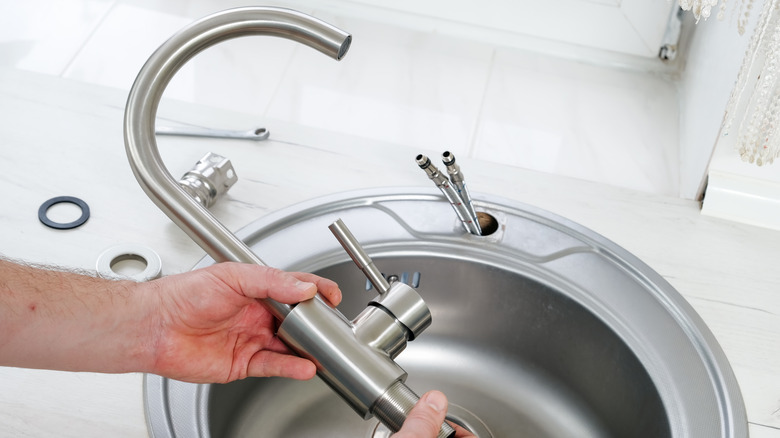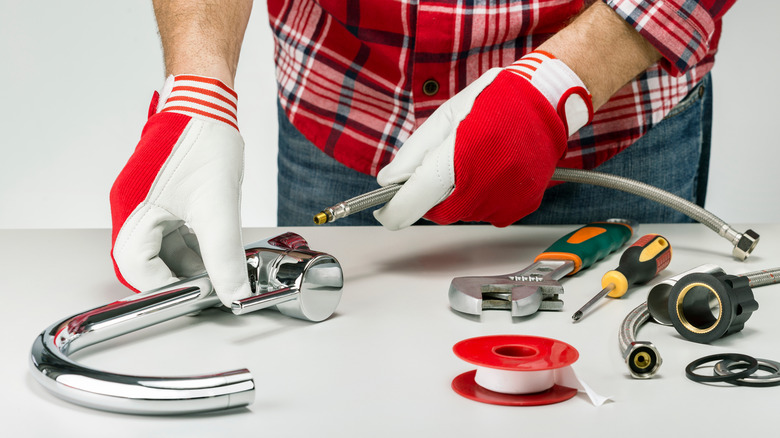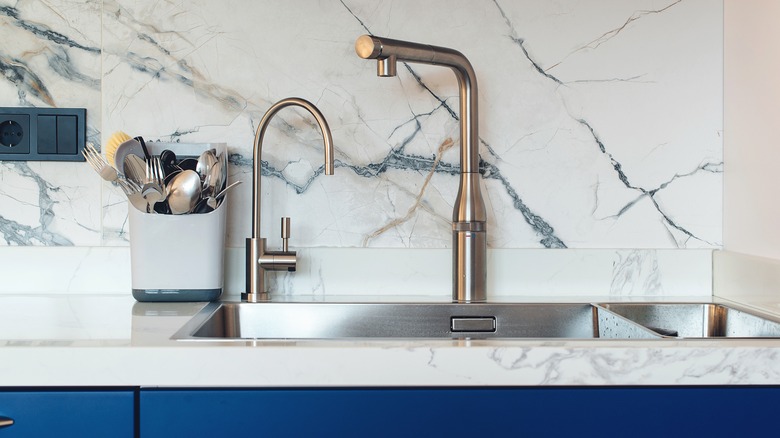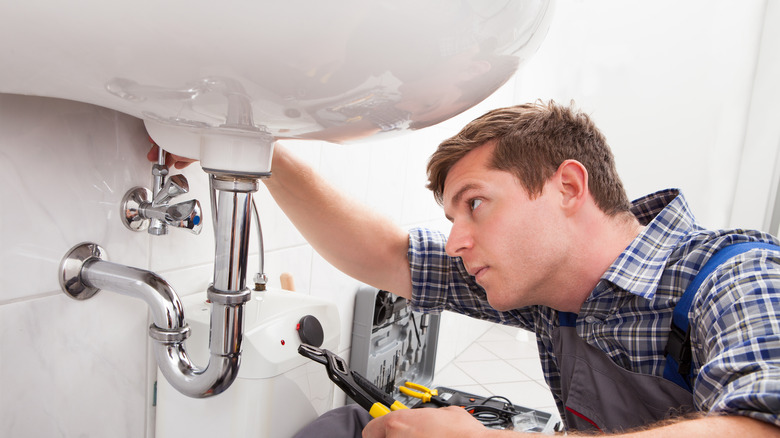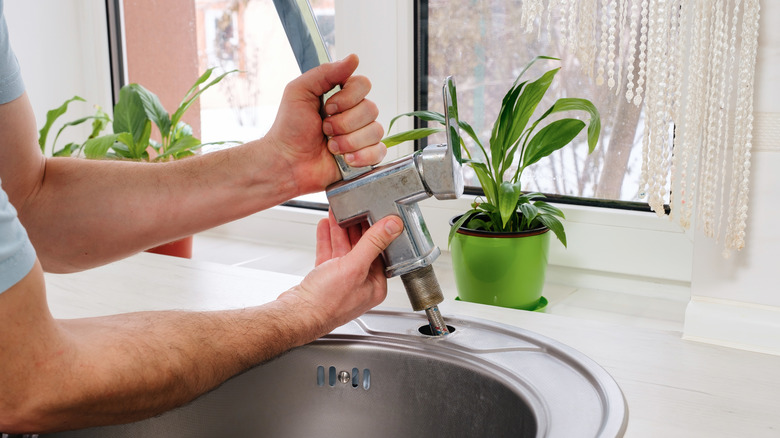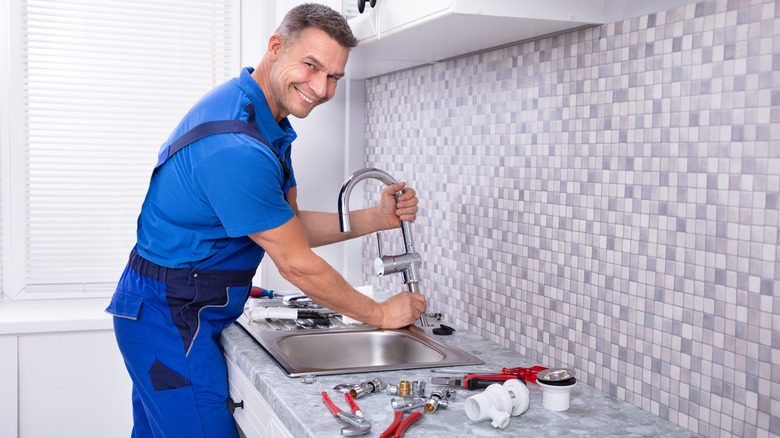5 Simple Tips For Changing Your Kitchen Faucet
There is no doubt that the kitchen is among the most used rooms in the house. And out of all the kitchen tools, faucets are the most prone to damage because of the frequency of use. An average household uses about 82 gallons of water daily, mentions the United States Environmental Protection Agency. A good amount of this water is used in the kitchen, so you have to engage the faucet a couple of times a day. With that said, there are plenty of reasons why you would want to change the kitchen faucets. Some popular ones include when you need to do a major upgrade or save water from leaky taps.
You will be surprised to discover that small leaks from faulty faucets can make you lose up to 3 gallons of water per day; significant ones can be tenfold, via Central Air Heating, Cooling & Plumbing. Changing kitchen faucets is a popular DIY project that any homeowner can take up. However, it is not as simple as it looks; you are bound to encounter a few bumps on the road owing to several factors beneath the sink and the different faucet configurations. Whether you have previous plumbing experience, here are a few steps to help you replace your faucets like a pro.
1. Choose the right replacement
There are plenty of different faucet finishes and designs that you can pick from; however, not every single one is meant for your kitchen. Your kitchen's hardware will determine what faucet you will buy. First, know the number of holes in your kitchen sink; for instance, a regular two-handle kitchen faucet needs three or four for installation. So, unless you want to change the entire plumbing or drill a new hole, you should only go for faucets that fit your current hole configuration and location.
It is easier to go for a replacement option with fewer holes than upgrade to an alternative with a lot more. If you have more holes in the sink deck than you need, consider adding another sink feature, like a soap or lotion dispenser, via TruBuild Construction. But how do you know how many installation holes your current faucet has? It is not rocket science, and you won't need a plumber for this. Bend over and look underneath the sink; you won't miss seeing them and their connections.
2. Single vs. double handles: Which one should you choose?
If you can't choose between a single or double handle faucet, you should know that there is no right or wrong choice; it all comes down to your preference. However, while both single and double-handle faucets get the job done, each one comes with its own advantages. The single-handle faucet might be ideal if you want functionality above any other feature. It requires one hand for operation, leaving the other hand free to handle food or any other kitchen task. On the other hand, double-handle kitchen faucets give you more than just function. This tap allows you to control the water temperature, mentions Watermark Designs.
The two handles for cold and hot water give you the luxury of precisely customizing the water temperatures to your fancy. Nevertheless, as mentioned earlier, the path of least resistance when changing your faucets is going for one that matches your current configuration. However, elevating to a double handle faucet is not entirely impossible; you will need to call the pros to handle the upgrade, which can be a costly installation. Now that you have the replacement, let's look at how you will handle the installation.
3. Turn off the water valves
After getting a suitable replacement for your existing faucet, the next step is attaching it to the sink. However, before plunging ahead, you first have to shut off the water valves to prevent water loss and wastage during the process. Turning off the water valves is a no-brainer; all you need to do is turn the lever to the right to switch off both the cold and hot water supply to the faucets. But, if you live in an older house, chances are that the valves could be stuck due to the accumulation of minerals and rust over the years. First, before loosening the stuck valve, shut off the mains water supply.
Once you are done, there are a few tricks that Innovative Plumbing Pros LLC recommends when dealing with any stuck plumbing fixtures. First, you can try tightening the valve all in a bid to cause some movement and possibly break the mineral deposits. If the valve still doesn't budge, consider heating that spot with a blow dryer to loosen it so you can close it. You need to be careful not to break the valve in the process; however, since the mains water supply is already switched off, you shouldn't worry about water flooding your kitchen and cabinets.
4. Prep the working surface and remove the old faucet
If you have ever done DIY projects at home, then you surely appreciate the effort in prepping a working area. First off, you need to know that working in the small space under the sink is quite uncomfortable. To make this tiny place more relaxed, you need to look for small plywood pieces that fit into the area below the sink. You can also place the end inside the sink on small paint containers to create an inclined angle. This is more comfortable and also reduces the distance you need to raise your hands while under the sink.
Removing the old faucet is relatively easy; all you have to do is to extract the screws and bolts before pulling the tap from the top. However, if you encounter a stuck nut or bolt, you can use the same trick Innovative Plumbing Pros LLC recommends when dealing with a jammed plumbing fixture. Alternatively, you can use an oil-based lubricant and try loosening the nuts after a couple of minutes, details Mr. Kitchen Faucets. Remember, some water might still be left on the supply line, so it is better to have a bucket and a rug just in case.
5. Install the new faucet
If the replacement involves installing a faucet with the same configuration holes as the previous one, installation should be straightforward. However, if you are installing a single handle faucet to a configuration with three holes, you first need to install a deck plate, better known as an escutcheon. This device plate is essential for aesthetic purposes, hiding the ugly unused holes from the previous double handle faucet, via The Eco Plumbers. On the other hand, if upgrading to a dual handle faucet, you will need to drill extra holes to give way to the new pipes that did not previously exist.
It is recommended to call the professionals to handle such upgrades safely. Right after, you will need to fasten the bolts and nuts back into place tightly for even installation and prevent any leaks. Finally, attach the hot and cold water supply lines carefully, be sure not to mix up the two water lines during the process. The last step is to check whether there is any leak and fix it immediately. You don't want to deal with water leaks that might also cause the faucets to have low pressure in the future.
